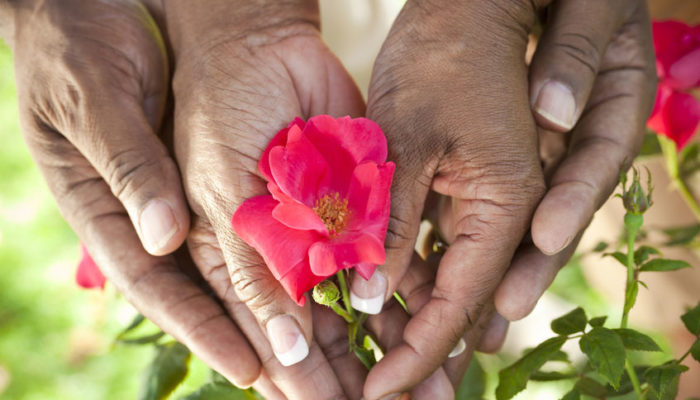
It is said that touch is our “first language.” As babies, it is through touch that we learn connection, trust, and well-being.
Not just for children. Touch is integral to these feelings throughout our lifespan. But older adults have roughly 75% fewer touch receptors than 20-year-olds. In a twist of fate, when we literally need more touch to “feel” the benefits, we have fewer opportunities for it. Spouses die. Children and grandchildren live far away. No wonder pets become so important!
The healing power of touch. Although touch is strongly associated with emotions, studies show that massage, nonsexual affection, and even an informal hand on the shoulder can provide physical benefits.
- A warm touch releases oxytocin, the bonding hormone. It also reduces levels of cortisol, the stress hormone.
- Cancer patients who received massages from family members reported a 34% decrease in pain. They also reported a 29% decrease in nausea. (Family members reported benefits too!)
- In dementia care, long-term care facilities are able to reduce aggressive behaviors when staff members regularly hold hands with residents or touch them on the arm when talking.
Ways to offer more touch.
- Walking arm-in-arm or occasional touching of the forearm or shoulders.
- Offering your hand or inviting touch in the form of a handshake.
- This fun way of interacting provides many opportunities for safe, nonthreatening touch.
- Applying lotion to the hands and arms. Can you ever have too much moisturizer?
- Giving a nice rubdown during a shower or afterwards when drying off.
- Adopting a dog or cat. These furry companions provide endless opportunities for physical affirmation.
Provide a sense of control. Especially in the case of dementia, make sure the person you care for can see that a gesture of touch is about to happen. Get eye contact and look for signs that touching may not be welcome.

